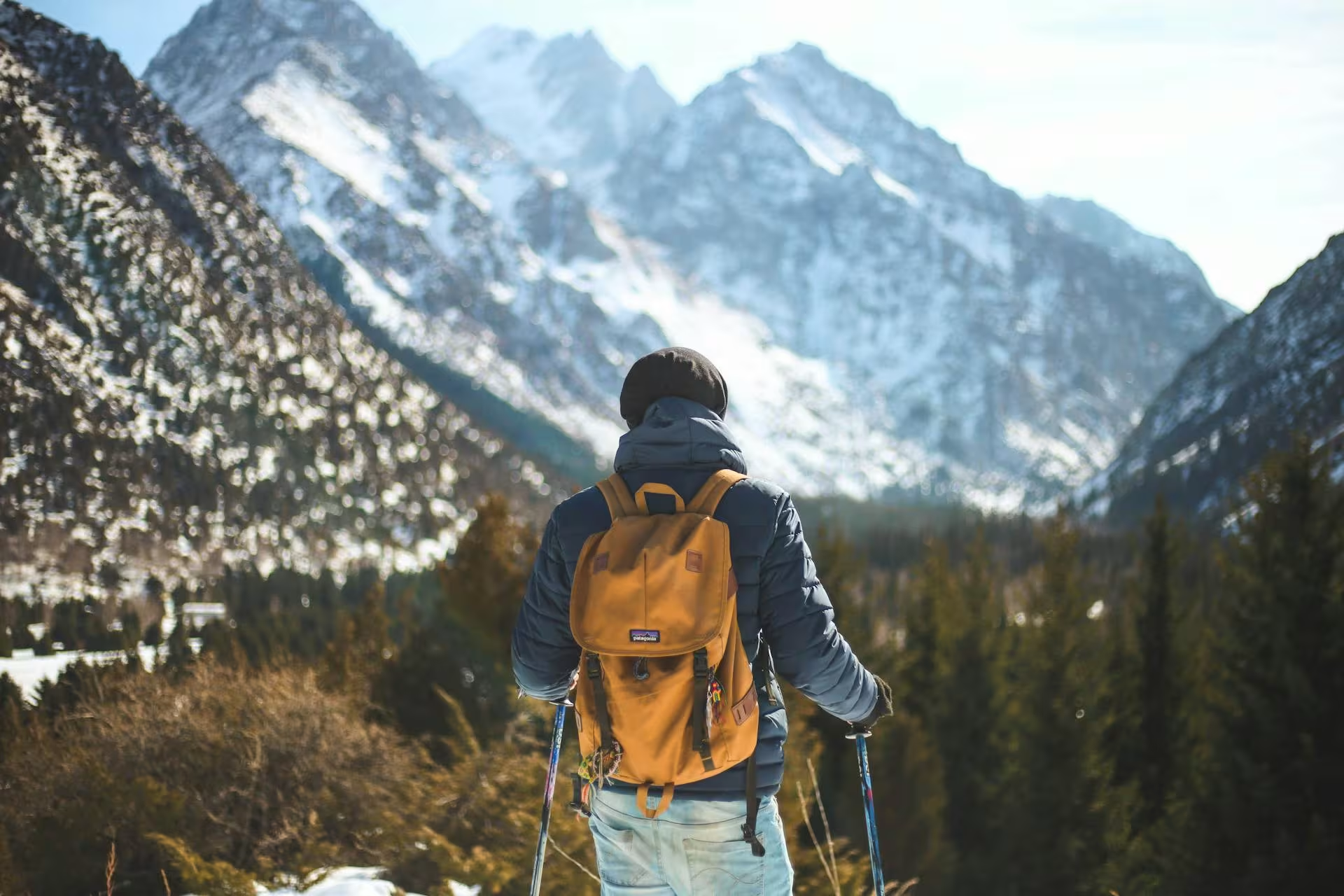Introduction
More and more travelers are embracing the freedom that comes with minimalist, carry-on-only travel. Whether you’re planning a weekend city break or a long-term backpacking adventure, relying solely on a travel backpack can simplify your entire journey. By packing light, you skip baggage fees, move faster, and reduce the stress of lugging around heavy suitcases. The travel backpack lifestyle isn’t just a trend, it’s a mindset that prioritizes flexibility, efficiency, and thoughtful choices.
In this guide, you’ll learn how to make it happen. We’ll walk through how to choose the right travel backpack, what to pack (and what to skip), how to organize your gear efficiently, and how to adopt a minimalist attitude that helps you enjoy more while carrying less. If you’ve ever felt overwhelmed by too much luggage or want to feel freer while exploring, this is your essential guide. For more tips on saving money on the road, check out our guide on How to Avoid ATM Fees Abroad.
Choose the Right Backpack
The foundation of traveling light is the right backpack. Most minimalist travelers opt for a backpack between 35 and 45 liters. This size is large enough to carry what you need for weeks, or even months, yet still small enough to meet carry-on limits for most airlines. Look for a backpack that opens like a suitcase (front-loading), has padded shoulder straps and a hip belt for comfort, and offers multiple compartments for easy organization. Durability and weather resistance are also key if you’ll be on the move often or exploring different climates.
Popular and reliable models include the Osprey Farpoint/Fairview series, Nomatic Navigator, and CabinZero Classic Pro. Each offers different layouts, features, and levels of structure, so it’s important to consider what suits your body and travel style. If you’re new to this, we recommend reading our Minimalist Travel Gear Guide, where we review the best travel backpacks for every type of trip.
Master the Art of Packing Light
Packing light is a skill that improves with practice, but one golden rule can help you immediately: pack for one week, no matter how long you’ll be away. Why? Because it’s easy to do laundry on the go. Focus on versatile pieces you can mix and match and that suit different weather conditions or social settings. Think lightweight, fast-drying, and multi-purpose.
Avoid bringing “just-in-case” items. These tend to take up space and often go unused. Instead, plan intentionally: bring only what you know you’ll use. Many travelers find that reducing bulk also reduces decision fatigue during the trip. You won’t be overwhelmed by choices, you’ll simply wear what you packed, and that’s incredibly freeing. Layers will keep you warm without adding weight, and lightweight accessories like scarves can transform simple outfits for different occasions.
Pack a Capsule Wardrobe
A travel capsule wardrobe focuses on compactness, coordination, and function. Choose two or three neutral-colored tops, one or two versatile bottoms, and a lightweight outer layer. Quick-drying underwear and socks are essential, especially if you plan to handwash during your trip. Stick to materials like merino wool or technical fabrics that resist odors and dry fast.
Limit yourself to two pairs of shoes: one comfortable pair to wear while in transit and a lighter option like sandals or flats to pack. Shoes take up the most space, so choose carefully. Organize your clothes using packing cubes or compression bags to keep your backpack tidy and maximize space. With this method, you’ll dress well, travel light, and keep your essentials within easy reach.
Keep Toiletries and Liquids Minimal
Toiletries are one of the easiest areas to overpack, but they’re also one of the easiest to streamline. Start by switching to solid products where possible, shampoo bars, soap sheets, toothpaste tablets. These don’t count against liquid restrictions and often last longer than their liquid counterparts. Stick to the basics: toothbrush, deodorant, sunscreen, and a small multi-use moisturizer.
If you need to bring liquids, ensure everything is within the 100ml/3.4oz limit and packed into a clear zip bag for airport security. Most items can be purchased locally, so don’t overthink it. Focus on space-saving and essentials, and leave anything that’s not truly necessary. You’ll find that even with a minimal kit, your daily routine doesn’t have to suffer.
Embrace the Minimalist Mindset
Packing light starts with gear, but success depends on mindset. The minimalist traveler understands that experiences matter more than things. You don’t need three outfits for every possible occasion, you need confidence and adaptability. Rely on digital documents instead of paper. Use apps for itinerary planning, maps, translation, and budgeting to avoid carrying extra items.
Minimalist travel encourages flexibility. By letting go of unnecessary belongings, you open space in your bag, and your mind, for spontaneous adventures, new connections, and deeper immersion. The freedom you gain from traveling light is worth far more than the things you leave behind.
Travel-Friendly Essentials to Include
Even with a minimalist kit, a few travel extras can go a long way. A collapsible daypack is great for short hikes, city explorations, or grocery runs. A compact travel towel is useful for hostels or beach days. Always pack a power bank, a universal adapter, and charging cables. These keep your devices functional and ready for navigation or bookings.
Eco-conscious travelers should consider packing a reusable water bottle, travel cutlery, or even a small reusable shopping bag. A slim money belt or neck pouch can keep your passport and cards secure, especially in crowded areas. These items don’t take up much room, but they’ll make your travels smoother and more sustainable.
What to Leave Behind
Resist the urge to overpack, especially when it comes to bulky tech, duplicate clothing, or unnecessary “just in case” items. Don’t bring multiple books, download them to an e-reader or use audiobooks instead. Skip full-size towels, hairdryers, or items that your accommodation will likely provide. One of the best parts of backpack travel is flexibility, and every extra item reduces that freedom.
Leave room in your backpack for local items, whether souvenirs or gear you buy on the road. Travel isn’t about carrying your entire home, it’s about learning to thrive with less. The lighter your load, the more you’ll enjoy the journey.
Final Tips Before You Go
Once you’ve packed, test your backpack by walking around your neighborhood for 20 to 30 minutes. This will show if it’s truly comfortable and help you adjust any weight distribution. Double-check airline baggage policies, some budget carriers are stricter with dimensions and weight. Keep valuables like cash, ID, and your main bank card in a separate, accessible place, ideally in a crossbody pouch or travel wallet.
If you’re flying soon, don’t miss our airport security hacks post for tips to breeze through checkpoints. Traveling with just a backpack becomes easier with a few simple systems and pre-departure checks. Once you get used to the freedom, it’s hard to go back to traditional luggage.
Conclusion
Traveling with just a backpack might sound intimidating at first, but it quickly becomes second nature. With less to carry, you move more freely, worry less about your belongings, and focus more on your surroundings. Minimalist travel doesn’t mean sacrificing comfort, it means choosing it in a different form.
Whether you’re preparing for a short getaway or a long-term journey, trying this approach can be both practical and liberating. Start with one trip, evaluate how it feels, and adjust over time. You’ll find that you don’t need much to travel well. In fact, often, the less you carry, the more you gain.
Frequently Asked Questions
For most travelers, a backpack between 35 and 45 liters is ideal. This size fits airline carry-on restrictions and offers enough space for clothing, gear, and essentials without overloading you. If you pack strategically, this size can serve for both short trips and extended journeys.
Yes, most travel backpacks under 45L qualify as carry-on items, depending on the airline. Be sure to check specific dimension and weight limits. Backpacks designed for travel often meet these requirements, especially when they are front-loading and streamlined.
Start by packing for one week, regardless of your trip length. Choose clothing that is versatile, layerable, and quick-drying. Stick to essentials and avoid bringing “just-in-case” items. Use packing cubes or compression bags to stay organized and save space.
Traveling with only a backpack is generally safe and convenient, especially when you keep your valuables in a secure pouch or money belt. With less luggage, you’re less likely to lose items or become a target for theft. Staying mobile is one of the best safety strategies while traveling.
Avoid bulky tech, duplicate outfits, full-size toiletries, and anything you can buy locally. Leave behind hardcover books, multiple pairs of shoes, or anything that adds weight without daily use. If it’s not essential, it’s best to skip it.
Absolutely. Many digital nomads and long-term travelers successfully live out of a single backpack for months or even years. It requires mindful packing, but the benefits in mobility and simplicity are worth it. Start small, refine your gear, and scale up your experience.

